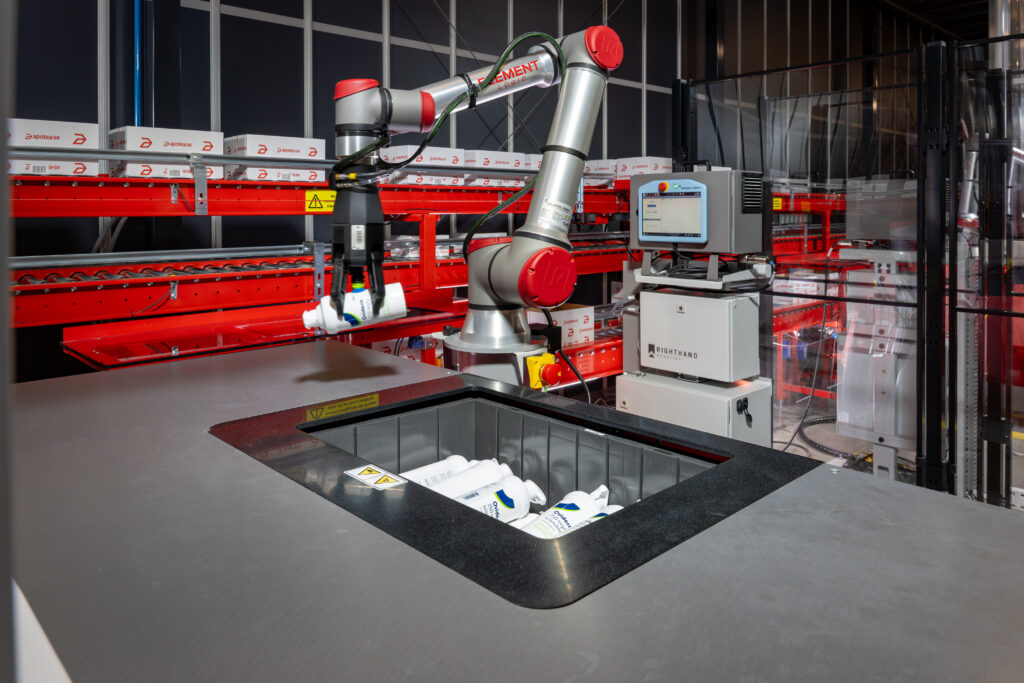Robot Picking just like the real thing
23rd May 2024

Autonomous, robotic picking of pieces in warehouse order fulfilment relies on sophisticated ‘hand-eye’ coordination. David Schwebel, Vice President of Sales and Strategic Business Development for RightHand Robotics, spoke to David Priestman about the technology at Manifest, Las Vegas.
Massachusetts has always been a hotbed for science and tech. Some of our world’s most beautiful minds come to fruition at MIT and Harvard. So, for industrial robotic picking does this reputation precede itself accurately?
RightHand Robotics, based just outside Boston and founded in 2015, manufacture the most important part of the robotic picking arm – the ‘hand’. This product is called ‘RightPick’. The latest version of this is the RightPick 4 system, which can handle items up to 25% larger and 50% heavier, significantly reducing the need for human intervention. It can be used with various makes of robotic arm and the company collaborate with them on product development.
“We own pick and place and go beyond the limitations of known operations,” David Schwebel (pictured below) tells me. “The product has a broad scope for reach, range and reliability. We want to improve the delivery radius without over-automating, augment brownfield distribution centres and extend their value and longevity. Customers should optimise their DC space before moving.“
Robotic picking is not about replacing people, he argues. “It’s about enabling humans to not be robots. We take the back-breaking lift work. This frees-up staff to add a personal touch to customer order engagement, for example by writing a gift note for the package.”
Pick, place, decant
80% of the company’s sales are channel ones to system integrators such as Vanderlande and Element Logic, with whom is has partner programmes. Historically, RightHand Robotics (RHR) has achieved a mix of sales, with 40% coming from North America and the rest of the world and 60% coming from the EU.
RHR also provides to Movu Robotics the ‘Hand’ (Gripper), the ‘Eye’ (Vision), the ‘Arm’ (UP10e) and the ‘Brain’ (AI / ML software) that is embedded in the eligo presentation station and empowered by the escala shuttle system. What is the snoot, I asked Schwebel. “The Snoot is an extendable mechanism in the middle of our hand (gripper) that allows RHR to engage our myriad of suction cups to the item to be picked; it then retracts the picked item into the grasp of our hand, allowing the item to be safely and quickly moved to its next destination.”

David Schwebel
Pick, place, decant is how the RightPick operates. “That’s meaningless unless the warehouse’s ASRS and conveyors are synched with the picking,” Schwebel explains. “It’s low maintenance. If there is a problem, which is rare, you can cut the power, make a key turn and quickly replace a part. RHR understands that uptime is critical for the end customer (Practitioner), and we have developed our maintenance and repair operations for simple fixes and turn key replacements. For example, if you needed to change out the gripper, it takes less than 25 seconds – disengage the power and air, turn a key, and the entire hand can be changed out for the spare on site.”
Smallest footprint
The RightPick system can provide businesses with vital productivity as part of a lean material handling process. “It has the smallest footprint,” Schwebel points out. “RHR is arm agnostic, and when we use a collaborative arm, the entire footprint needed for a robotic piece picking system is the smallest in the industry.” The system learns as it picks, building a database of knowledge that allows customers to benefit from fleet learning. Each new robot benefits from 100% of the previous experience creating better AI with better analytics, metrics and training data.
read more

